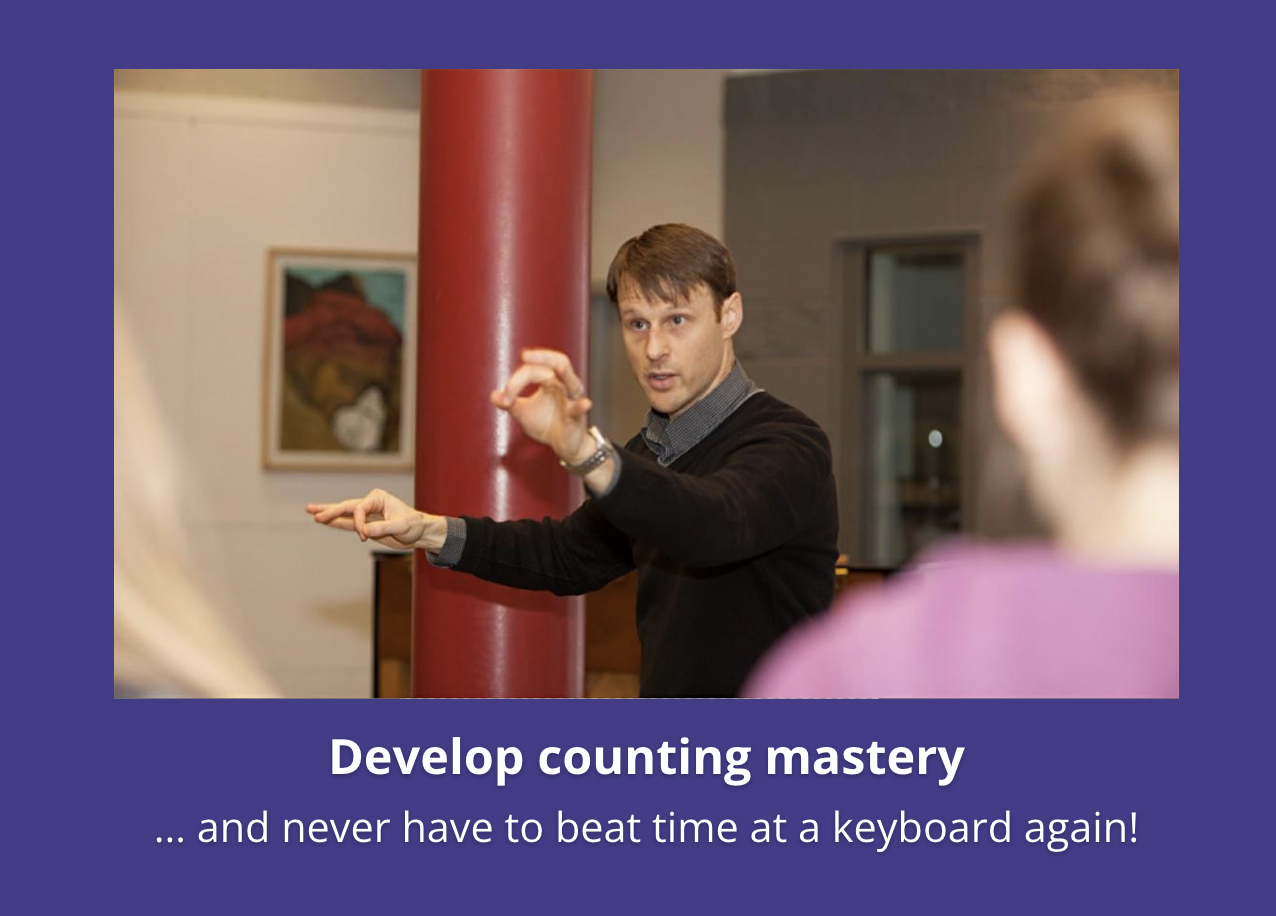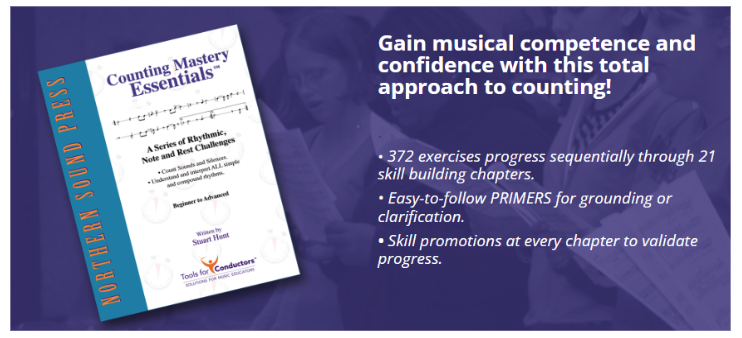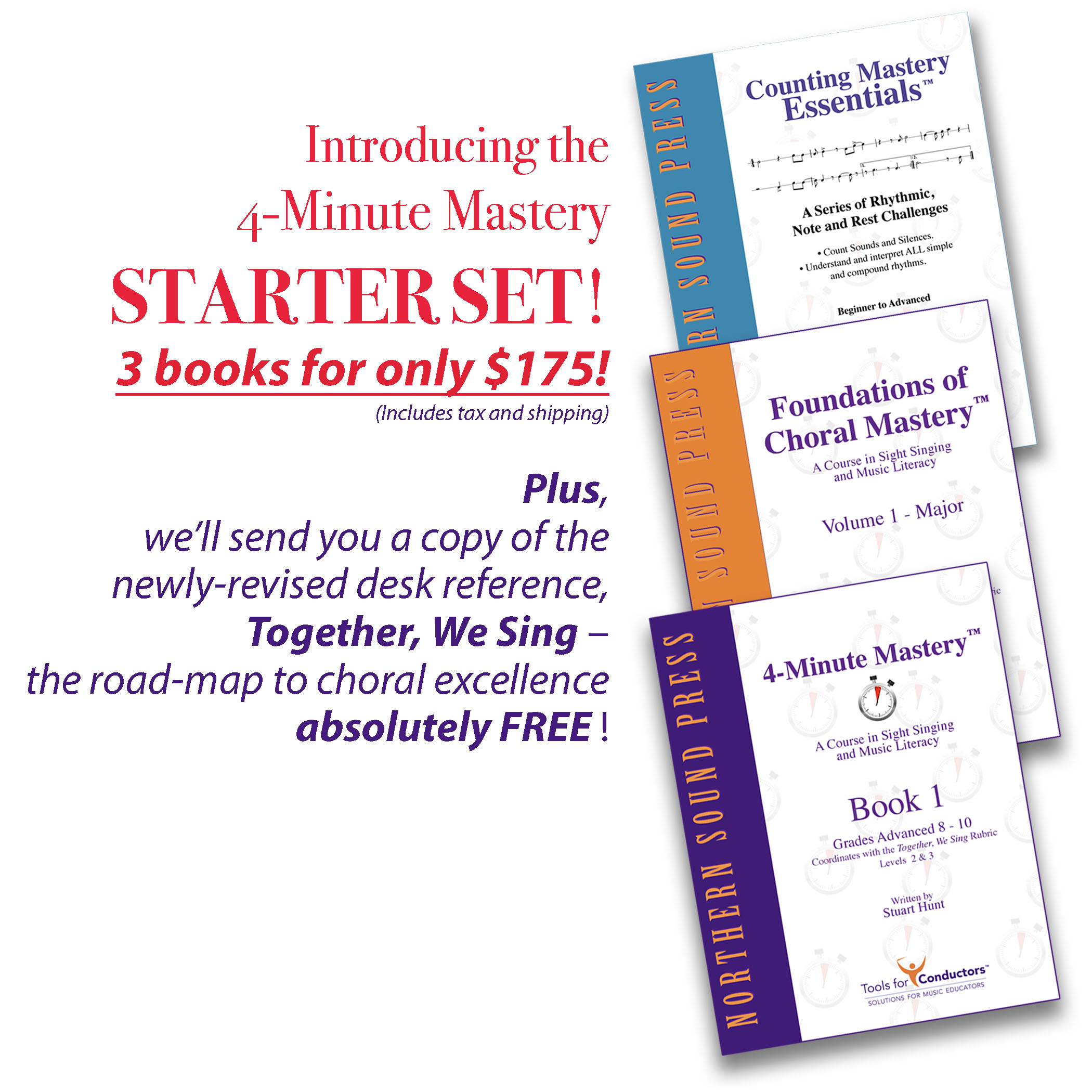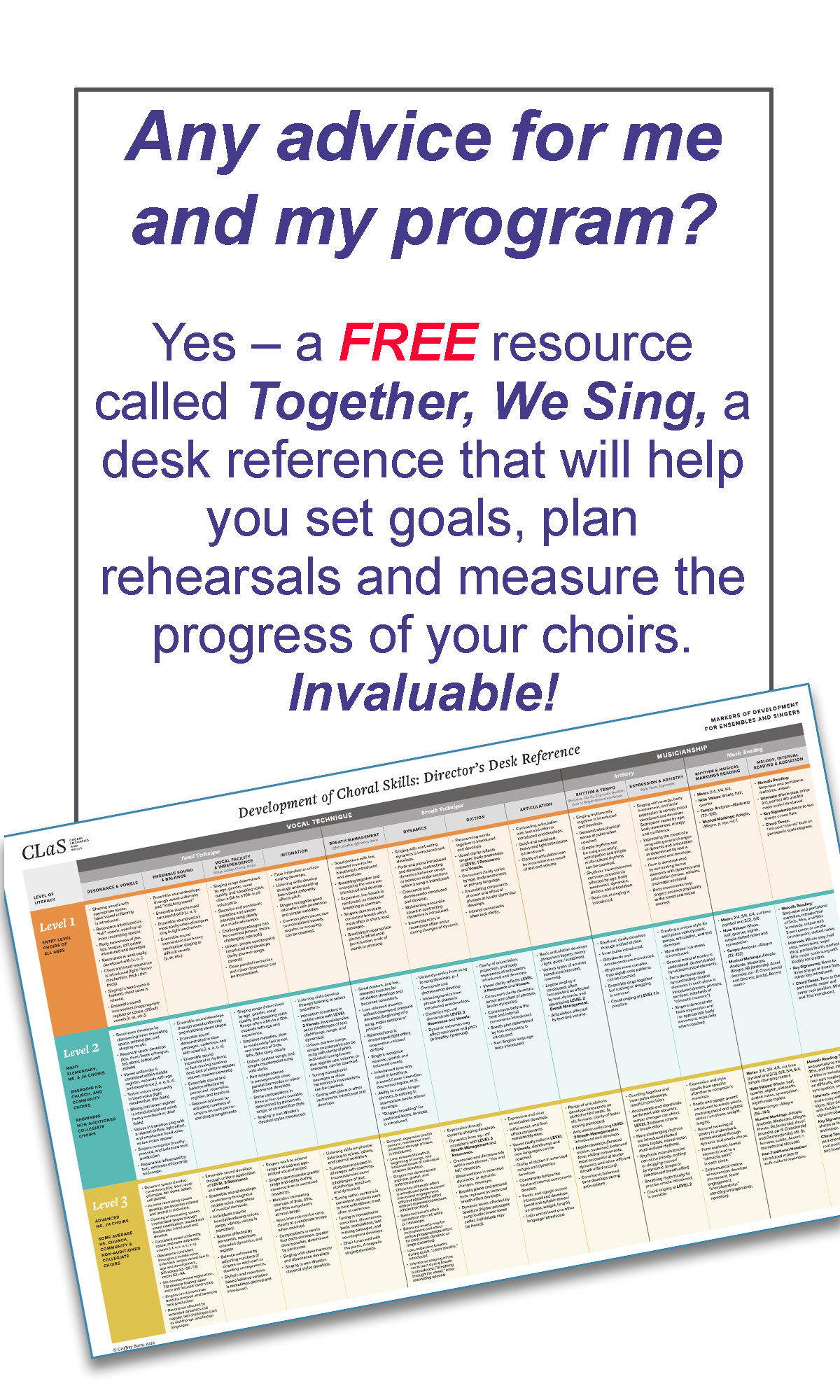
Blog Post #18
Beating Time vs. Conducting
The Conductor sets time – Musicians keep time.
by Stuart Hunt
We learn with good questions. May I stimulate your thinking by positing some in the hope that they may tap into your (hopefully honest) artistry as a conductor. Keeping good time is a non-negotiable, but do you know conductors you value who do not beat time? What do they do that replaces time-keeping?
AWARENESS
Master Yoda’s adjuration: ”Do or do not…there is no try”.
My variation: Trying FAILS … awareness CURES.
It is TIME / tempo that holds any and every ensemble together. When the ensemble is aware of and keeps great time, it frees the conductor to do the “important” things that lead to artistry. Think for a second: When you watch a string quartet play a concert, where is the conductor? Well:
• There isn’t one present because … EVERYONE is keeping time.
• Or ARE they? https://www.sciencenews.org/article/how-string-quartets-stay-together.

Now that’s with only FOUR of FIVE players. Isn’t this what choral conductors assume / think / HOPE their ensembles are doing? Symbiotically communicating? Are you really secure in that thought? Does that work with 65 or 100 musicians? Hmmm.
With choirs and ensembles, we juggle seating and section arrangements to increase the ability to hear and transfer pitch, balance, cohesion, etc. BUT, when one corner of an ensemble can be 20-30 feet from others, it is believed / taught that watching the conductor is the glue.
QUESTION
If that is true, don’t you think that could lead to rather dull, repetitive singing if the conductor feels their primary job is to continually beat time ? I do.
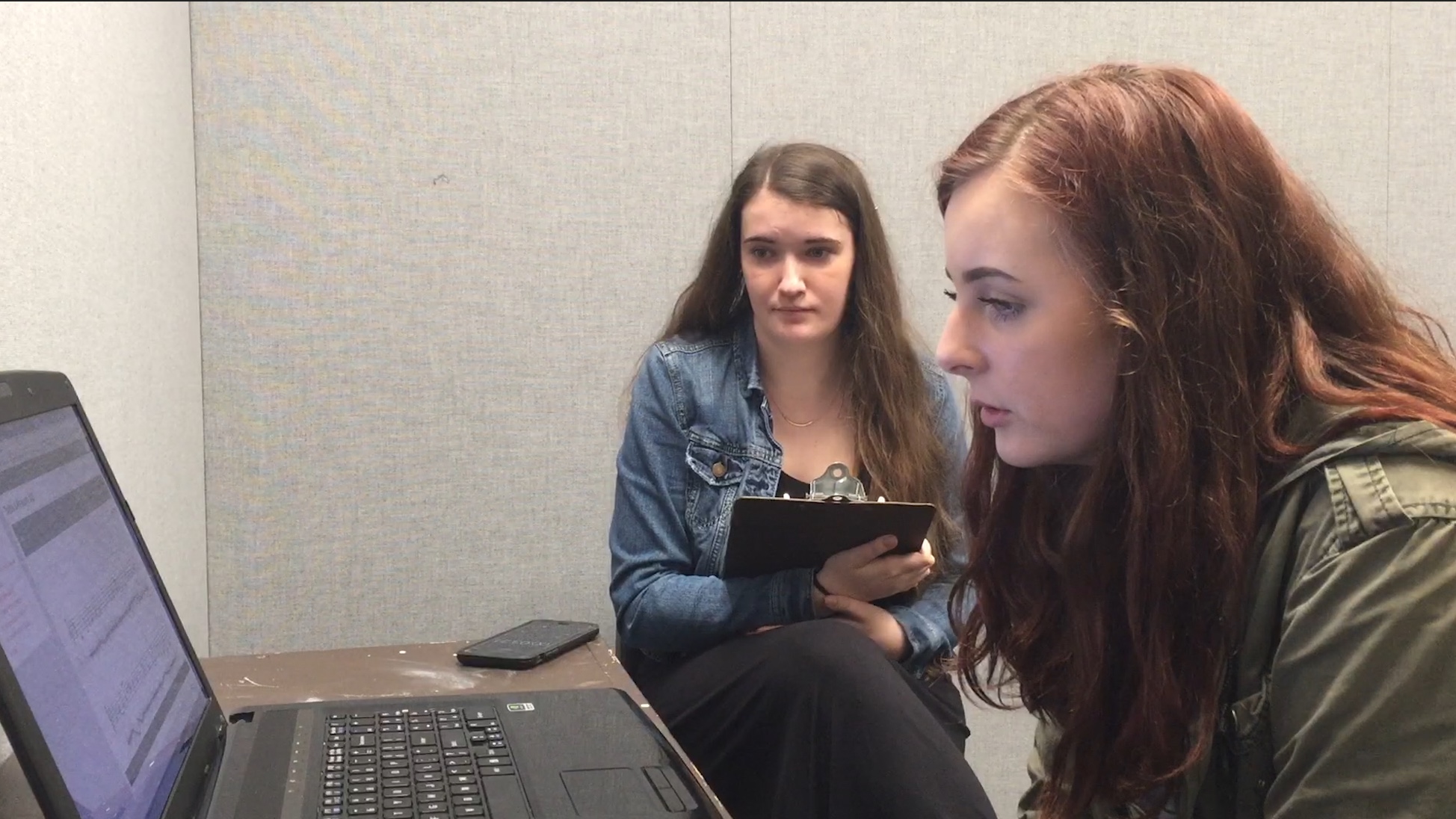
WHAT YOU NEED TO KNOW
in 2 minutes !
Vocal / Instrumental / Elementary / Rhythmic
Online digital assessments
Any device, anywhere, anytime

THE SOLUTION
Marching band drummers groove that and, after a while, they don’t watch a conductor because they keep great internal time. They are the groove. The band trusts them and is always aware of consistent time.
Actually, there is a silver bullet, and you know what it is, but not all of your students may. It is SUBDIVIDING rhythm into component parts that will groove them:

Make no mistake: counting rests in your head is just as important as counting notes, so, make up some of your own, or, don’t bother. Click here.
USING A REGULAR OR SMART METRONOME
One of the advantages of using a smartphone metronome is the visual component. Holding up or setting a visual metronome in front of a choir and asking them to subdivide the beats (vary 4/4, 2/4, 6/8, etc) with no audible clicks helps awareness of each singer’s perception of solid time vs. rushing or dragging. This does take patience, but what is the alternative? Allowing a singer or two, or more, to rush or drag can lead to catastrophic results. Singers need to settle:
• If you perceive rushing or dragging, what should your response be?
• If the choir is not with the conductor, what should your response be?
When I work with choirs regarding centering pitch, I ask them to sing the first complete phrase of “My Country ‘Tis of Thee” in tune (that is usually the norm). Next, sing the phrase a little flat (I usually use simple block chords to accompany them, so they are aware of where “in tune” should reside). Often, I get to say: “I’m sorry, you are singing in tune. I’m asking you to sing a little FLAT.” We all get a giggle. Not everyone can. A volunteer usually can do that. Next comes the hard part: sing a little sharp. It is harder than they imagine, but, again, the singers default to being in tune…which, on balance is exactly where you want them, but it helps to combine being spot on with humor.
The same is true with keeping great time. Again, awareness carries the day:
• With the metronome, have the choir demonstrate keeping steady time.
• Next, let’s drag a little behind (using either clicking or visual aids).
• Then, let’s rush a little.
• “What do you notice?” (You might be very surprised at the responses)
What this does is reinforce awareness. NOTE: When practicing time we should avoid “Click Fatigue” – it will drive you and your singers nuts. Incremental practice of exactly what is needed will foster awareness…to a point. If it becomes annoying (maybe too long), change the focus. Perhaps your score study reveals a particular point in a piece where this tends to recur.
PREPARATION
It is a good idea to practice subdividing then test yourself: Set a tempo of 120. Get in your groove…subdivide if necessary. Reset the tempo to 30 (but keep the 120 in your head) and practice hitting beat #1. This is a great way to help you conduct / coach slower tempi, when subdivision is the best way to keep the ensemble together.
THE MODEL: DR. ROBERT SHAW
As one of the most influential choral conductors of the 20th century, it is worth exploring why Dr. Shaw advocated for and used Count-Singing:
http://robertshaw.website/preparation-rehearsal
I strongly recommend you access this article and scroll down to the worth-the-read section entitled: “Count Singing”. Shaw used it even with professionals he hired for specific recordings. His belief and use is legendary, even with pros. Here’s an excerpt of a transcript from question/answer session entitled “Conducting Seminar”, Cleveland, Ohio, 3 November, 1958:
Count-singing is a procedure that teaches pitches and rhythms simultaneously and trains the singers to share a common pulse. The premise is that all beats and subdivisions are chanted on proper pitches, changing pitches as the rhythm dictates. Numbers are used as follows, “one-and-two-and-tee-and-four-and,” substituting tee for three because the consonant group in the latter takes too long to articulate. The example below illustrates the notated music on the top staff and what is actually sung on the lower staff:
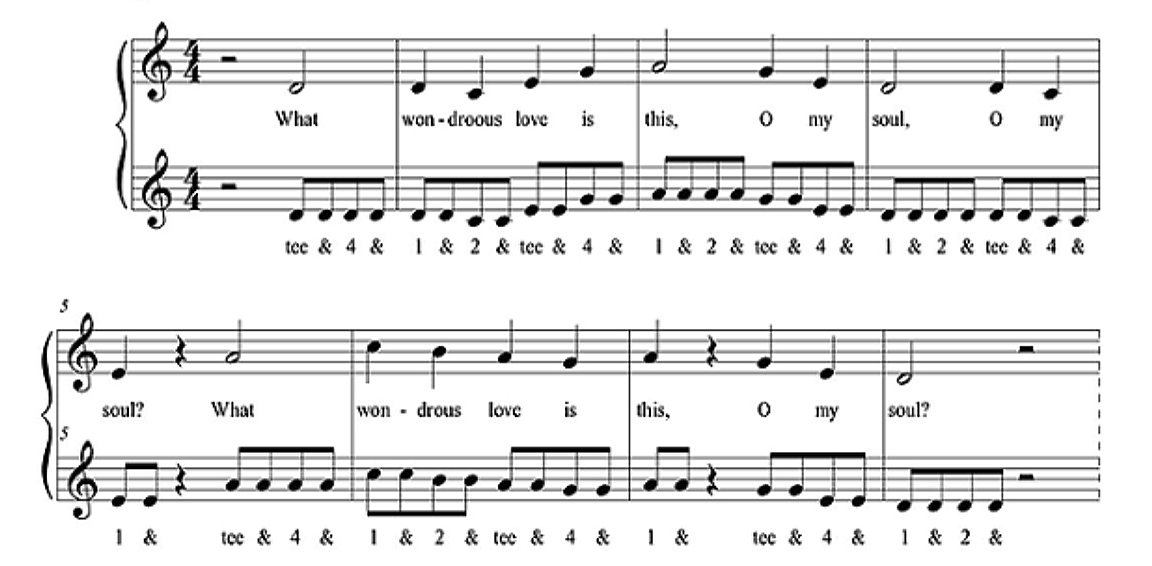
Dr. Shaw masterfully encouraged, taught, and modeled count singing for an entire profession. When you watch his conducting, you have a clear sense of time, but it is not beating a pattern. He is expressively conducting other concepts within a time-felt framework. If that sounds like hedging, watch it in practice:
https://www.youtube.com/watch?v=42diMGHG_Z0
and watch the 17:30-21:30 mark. NOTE: Dr. Shaw then includes dynamics in the counting which led to consistent, coherent expression freeing him to conduct phrases, anticipate entrances, blend choir and accompaniment, etc. He also admonishes: “Text is joined with rhythm before it is joined with proper pitches.” Yes, he is beating time but the focus for the choir in a large circle is the plethora of expressive dimensions solved
by internal time-keeping. MASTER this yourself before you try to teach others. Every day, every way. Be creative and discover how you learn and keep time. Share that with those you teach.
ALERTS:
• Dynamics: Getting louder does not mean getting faster, and the reverse: Getting quieter does not mean getting slower.
• Do you ever have to compete with a stronger singer who has their own sense of time / interpretation? What does that do to metric cohesion? How do you deal with that? DO you deal with that? (You had better !)
WHAT SHOULD YOU CONDUCT?
Singers should watch the conductor for a different reason. The conductor may have to
occasionally mark a major or important beat or section, but we SHOULD conduct:
• Phrases
• Dynamics
• Entrances / exits
• Downbeats where necessary
• Interpretation
• Where tone resides
• Balance (because they have the best seat in the house and should be monitoring the sound of the performance venue)
How much do you allow for organic interpretation by your ensembles? Are they really becoming independent musicians (in ensemble) or merely following you? Why not test that theory: Set time, stop conducting and listen. You’ll learn a lot.
EXERCISES THAT REALLY HELP
Percussionist Mac Santiago says:
“A poorly-played note well placed (sung) is better than a well-played (sung) note placed poorly.”
First
1 – Choose an appropriate key for your ensemble to comfortably sing an octave.
2 – You SET time, they KEEP time. Give them 4 prep beats at the tempo they can KEEP accurately.
3 – For example, at 88 bpm, have the choir sing:
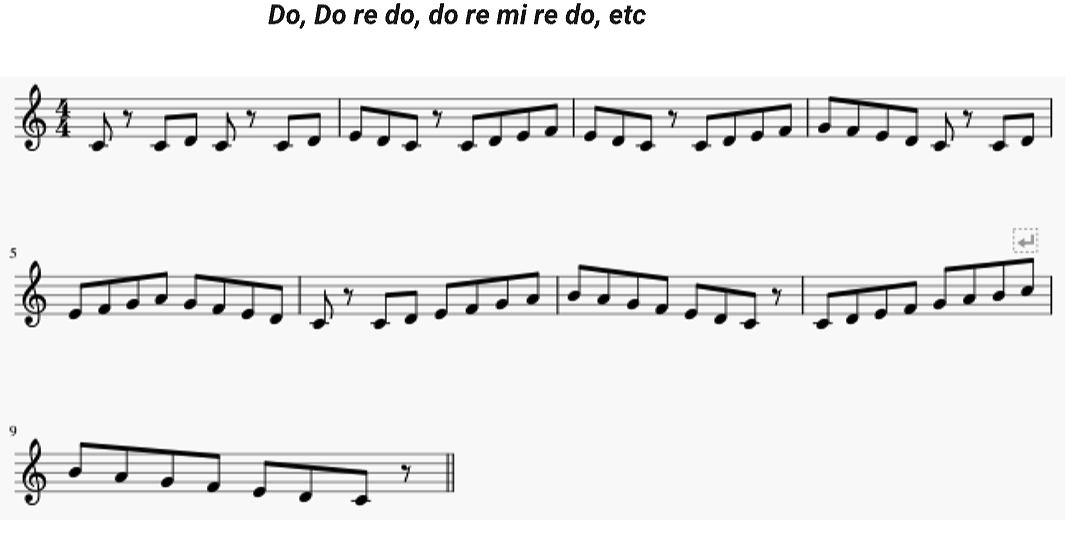
4 – If you are satisfied, start then at the TOP of the scale and reverse it, just continuing on: Do, Do ti Do, Do ti la ti do, etc.
Second …
NOW, ask them to sing ONLY the scale notes…keeping the other notes going in their head at the set tempo:
Do, (do) RE (do), (do re) MI (re do), (do re mi) FA (mi re do…do re mi fa) Sol (fa mi re do) etc.
HINT: The beats alternate: If you tapped quarter notes on your knee with one hand and held the other ABOVE it so that you are then tapping 8 th notes in a down/up pattern, your first DO is a down-beat; the RE is an upbeat: MI is a down, FA is an up, etc.The ensemble could find that very helpful (for visual / kinesthetic learners). Do it EVERY DAY until the ensemble has got it. It might be interesting to demonstrate to parents or an audience the ensembles acquisition of such a challenge. Do it as a warm up IN FRONT of an audience (“Sorry, we didn’t have time for a full warm up. Please excuse us for a moment”). It’s magic!
Third …
BUILDING GROOVE – rhythmic canons
1. Choose a pattern (or just write one on the board). Here are some examples:

2. Groove it … in TIME
3. Split the choir in half
4. Start one group 2 beats later
5. Then 3 beats later
6. Divide the choir in 3 parts
7. Same idea
8. Now, toss in DYNAMICS
9. Do a 2-measure pattern … or 3 or 4 measure pattern
WIN/WIN vs. LOSE/LOSE
• Turning “work” into fun is a win/win
• Turning fun into work is a lose/lose
That’s the trick. Being inventive enough to practice short, “educational” work as fun. If you are a little short of creativity that day, ask the choir. Likely they will create something…which they can see as a “game”…fun.
Imagine, solving the time challenge. How will that change your conducting? And performances? How good will that feel knowing your musicians don’t really need external time-keeping?
You can find all of this, and MORE, on a FREE desktop or wall-size laminated version of Dr. Geoffrey Boers “Together, We Sing” ground-breaking, first-ever Choral Rubric. CLICK HERE.
Stuart Hunt is in his 54 th year conducting public and private choirs. His company, ToolsforConductors.com , writes and publishes choral sight-reading and online assessments.

